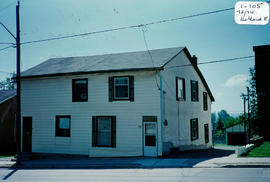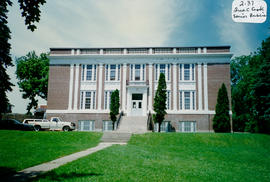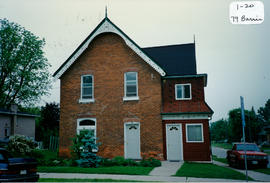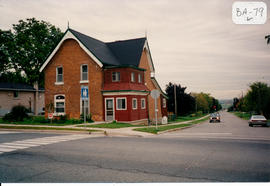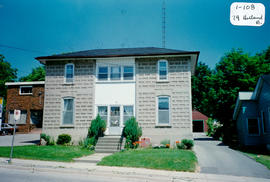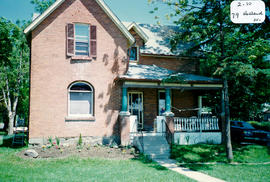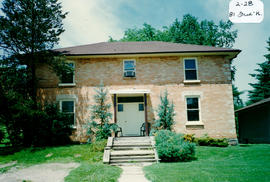- CA BWGPL GJ-HB-2017-03-27-01
- Item
- 1996
Part of George Jackson fonds
This mid-block building is located close to the street (on the south side) at 72 and 74 Holland St. East. It was built in the 1870’s (after the fire of 1871) in the Neoclassical Duplex style. According to historic maps, it may have been one of a pair of buildings built side by side on Holland Street.
The Prolbert family lived at 72 Holland St. East for many years. “Pentypool” worked for Bill Sutton and was a sign painter. The house at 74 Holland St. East was rented to a number of people, including Jim and Jane Armstrong (when they were first married). Later it was the home of Dan Collings, Mrs. Campbell, Neil and Dorothy. Dorothy was Dan’s housekeeper for many years. He built a horse stable and had a team. Barney Campbell drove the team on the marsh to and from sales.
The two-storey, four-bay, semi-detached house has a simple, rectangular form with a medium-pitched, saltbox roof. It has slightly-raised entrances that are located at either end of the façade. This placement gives greater privacy than paired entrances, but it places habitable rooms along the party wall. The doors are set into high, rectangular openings and are not original. A transom is still in place on the east entrance, but the transom has been closed in over the west door. There are large window openings with low floor to ceiling heights. Unlike in typical neoclassical buildings, the windows (not original) are not aligned. The large, front, ground-floor window in the east half has been partially filled. Windows are set into plain, rectangular openings with plain, wood frames and sills. Smaller, upper-storey windows are offset from the ground floor. The building has wood frame construction, vinyl siding (not original), a parged, stone foundation, and a basement. According to the 2000 inventory, few original details remain other than the building’s general form. (1, 2, 3)
George Jackson

